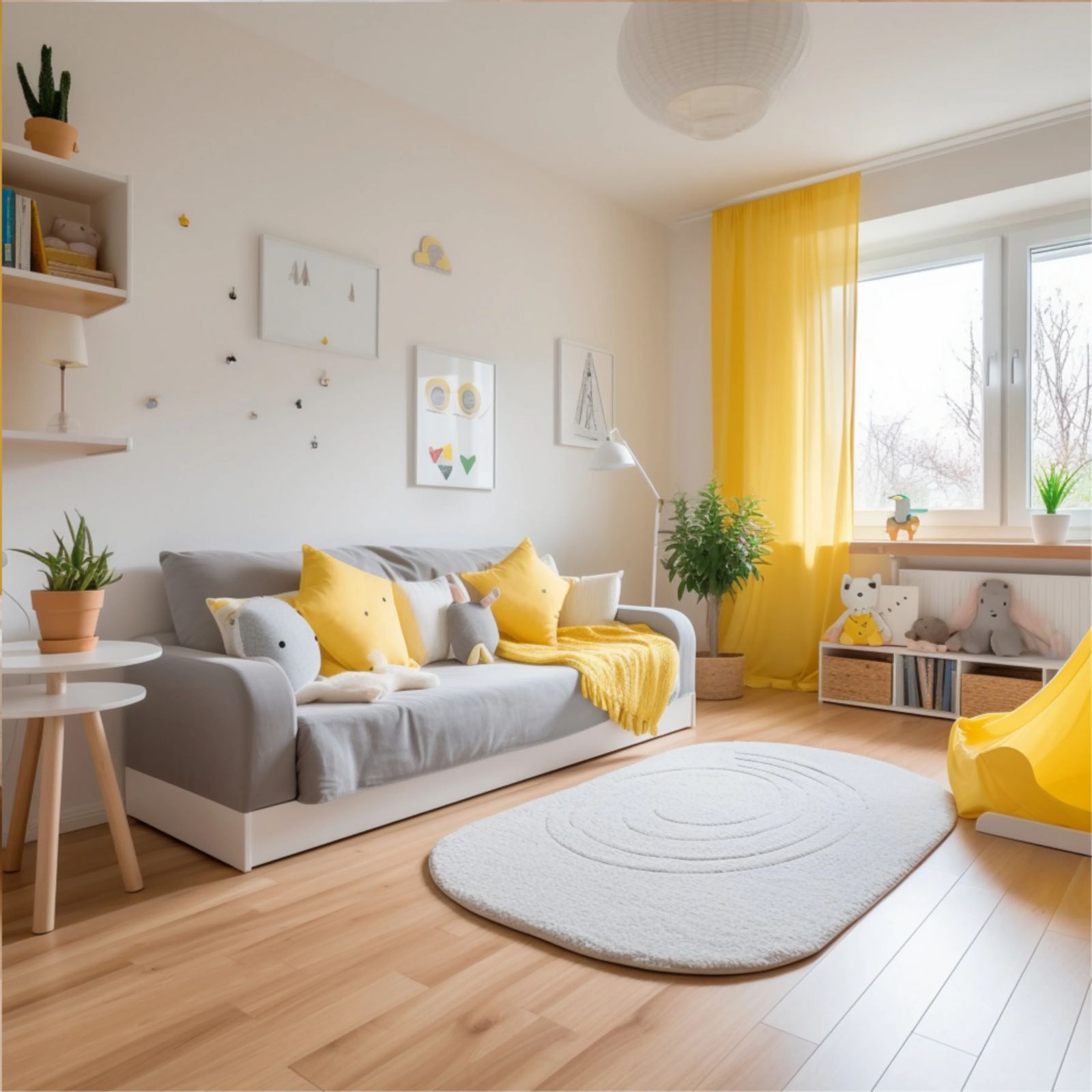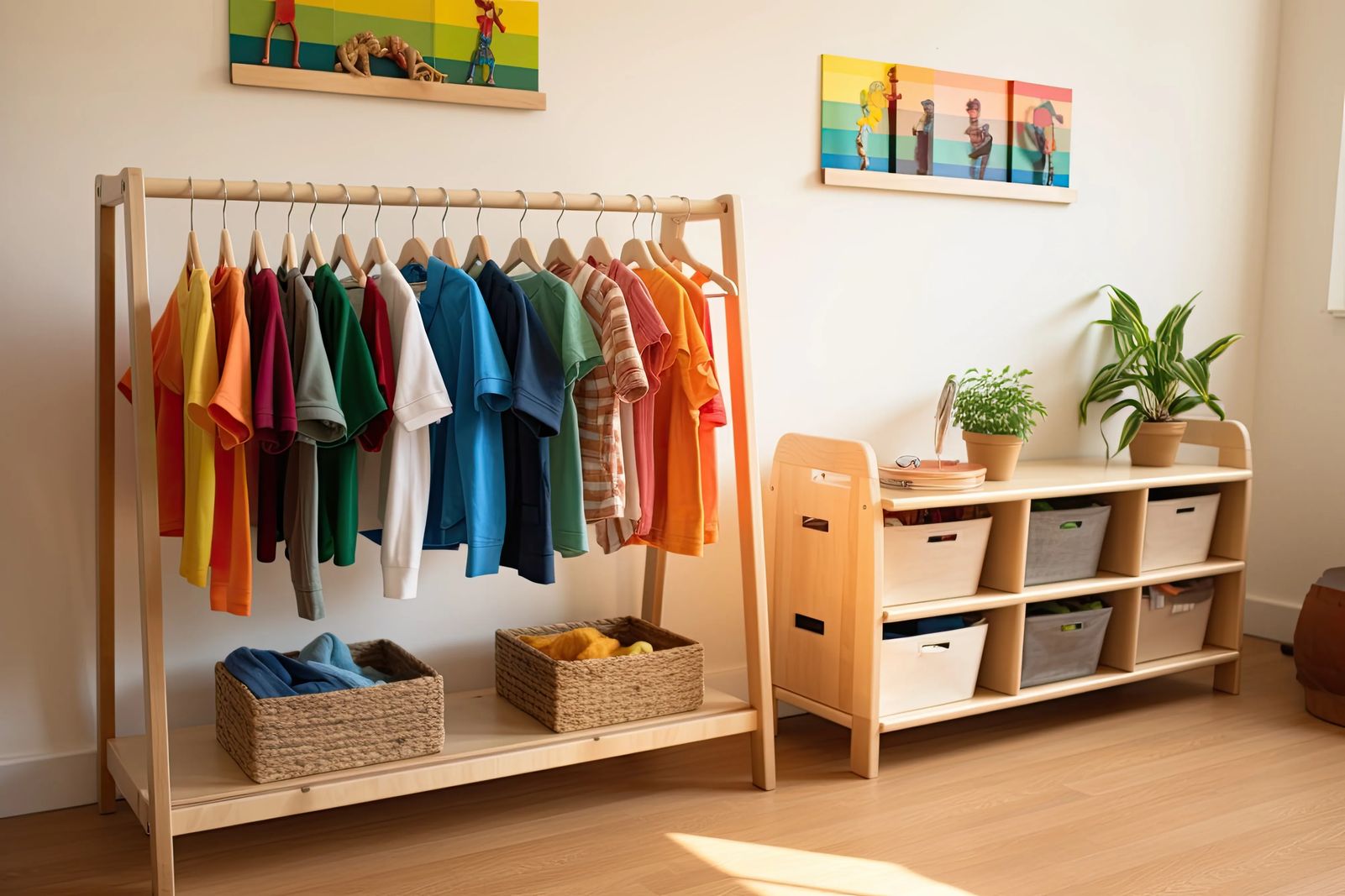A Montessori-Inspired Home Guide
How to turn your home into an inspiring and empowering space for you and your little one(s)
Written by Lucy Gibson

What if I told you any home can become a Montessori-inspired home and, what’s even better, you can do this on a budget? It’s more about how we can create inspiring and encouraging spaces in your home and less about buying wooden and other “educational toys” from online retailers. Real learning comes from exploring the environment and its endless possibilities! Are you ready to take a look at some precious tips to get you started?
What does a Montessori-inspired home look like?
- Decluttered and minimal: let’s start with the basics. We can only start working our magic once the clutter (read: anything you no longer use or need) is gone. Did you declutter your home and keep only those items you really need, love and use? A minimal home doesn’t necessarily mean having bare walls and empty shelves. It means having only those items that have been carefully curated to work well for you and your household. Got it all done? Good! Off to the next step we go!
- Organised: it’s time to create systems that work for everyone in the household. That saying “a place for everything and everything in its place” never gets old! Everything in your home should have a designated home - even those random little bits and bobs…! Once they have all been assigned a home, the key to ensure everything stays organised is to tidy up as you go. If even the busiest classroom packed with over twenty toddlers can look tidy at the end of the day with this one simple rule (believe me, I’ve been there!), then so can your home! Keep on practicing tidying up as you go until it becomes second nature to everyone (little ones included) in the household - I promise you it works!
- Calm and inviting: a Montessori-inspired home is loaded with neutral colours and natural materials, leaving objects and home decor to add a little pop of colour. Add a few plants here and there as they are also part of the children’s learning experience - plus, who doesn’t love a house plant? Remember the environment needs to bring peace, so avoid bright colours, especially on the walls. Earthy tones are always a great choice!
- Aesthetically pleasing: a beautiful and carefully planned space is a natural invitation to explore and be your best self. A few tweaks here and there and even the most modest house can become a much more beautiful place when: storage solutions are matching/coordinating; materials are in good condition and neatly displayed; resources don’t have any missing pieces or are damaged/broken; children’s books are forward-facing; the house is clean and has natural light coming in.

What does a Montessori-inspired home feel like?
- Safe and encouraging: what if (almost) the entire home was filled with yes spaces? Children are natural explorers and little scientists. They have an innate curiosity and need to explore and learn through their senses. An encouraging environment where the child feels free to explore and learn is the ideal space for them! Think health and safety first, though. Is there anything in the environment that can pose a risk to your little one’s health and safety? Make sure it’s out of reach and educate them as they grow older about the risks these items could present to them. A safe and encouraging environment will nurture independence, free exploration and deepen the learning about one’s likes, dislikes and personal preferences. Also, consider creating a calm space with your child’s help where they can go when they need to learn and practice self-regulation.
- Challenging at the right level: when observing your child, you will be able to understand where they’re at in their development stage and what are their needs and interests. Make sure to provide them with challenging materials, resources and activities that help them get to the next step. Make sure the activity is challenging enough for them to continue scaffolding skills but not too challenging that they feel frustrated for not being able to complete it.
- Respectful and inclusive: are you observing your child’s learning pace and temperament? Giving them time to process information and to learn by themselves is paramount (read: do not rush your child). Try your best not to do things for them when you know they are capable of learning these skills. That means including them in the house dynamic, such as doing chores like laundry, cleaning and even feeding the pet! Children must have a strong sense of belonging and significance and that comes from being an active part of this little community called family. Did I tell you they thrive on showing how capable and helpful they are? This, in the long term, will help them become self-reliant, cooperative and proactive adults with key life-skills. The earlier we share responsibilities with them (always age-appropriate, of course), the better!

What does the adult do in a Montessori-inspired home?
- Follows the child’s interests: did you know that children go through eleven sensitive periods during their early years? That means they are most likely to easily learn a new skill and acquire knowledge in a certain area during that limited time window. Through observation, the adult can identify which particular area is sparking the most interest in their child and provide them with the right encouragement and materials which will help them further develop these skills.
- Is intentional and efficient: we can keep the child busy with fewer toys and more intentional everyday activities that create deeper connections, encourage critical thinking, problem-solving skills and creativity. It’s about providing more quality and purposeful time for your child to blossom, whether it’s independently or in cooperation with someone else. Rethink those flashy bright-coloured plastic toys and always ask yourself: Is this helping my child in any way?
- Creates accessible spaces - We’re talking child-size utensils, faucet extenders, stepping stools, learning towers, art displays on your child’s eye level and easy to independently reach materials. We are here to encourage your child to become independent and to really see themselves as an integral part of their family. And, as a family, you are showing them that they matter by providing them with everything they need to thrive even in their most mundane everyday activities. Have you considered swapping a traditional bed/cot with a floor bed for your little one? This is basically the symbol of a Montessorian bedroom!

As you can see, a Montessori-inspired home can be anyone’s reality, whether your budget is rather generous or a bit tight. It’s the invaluable time, observation and understanding of your little one’s needs and developmental stage that will turn your regular loving home into a Montessori-inspired home.
The best part is that the entire family benefits from this process, so why not start today?

If you’re looking for more information and guidance on how to turn your place into a Montessori-inspired home, then drop me a message here or send an email to lucy@positivelysimple.uk. I’m here for you, wherever you are!
Let’s create Positively Simple spaces together!


